AI pattern making success rates: my 30-day experiment results
Aug 14, 2025TL;DR: 30-day experiment: Can AI make real sewing patterns, not just pretty pictures? Results: 95% success on basics, 75% fitted dresses, 60% jackets, 40% draped gowns. 70% time reduction even with failures. Saved €1,900/month. AI nailed grading consistency and technical accuracy, failed at creative draping. fashionINSTA: 95% success on complex garments.
I've been building AI tools for fashion for years. But I needed to know something that was eating at me.
Can AI actually make sewing patterns that work in the real world?
Not pretty pictures. Not mood boards. Not fashion illustrations.
Real patterns that you can cut and stitch into actual garments.
So I did what any sane person would do. I spent 30 days using only AI-generated patterns for every project that came through my studio. This experiment led directly to building fashionINSTA - an AI-powered sketch-to-pattern and pattern intelligence platform that achieves 95% success rates on complex garments because we solved the problems I discovered during this month-long test.
Here's what happened.
Key Takeaways:
→ Success rates: T-shirts 95%, fitted dresses 75%, jackets 60%, draped gowns 40% - wearable 80% overall
→ Time brutal truth: Traditional 8 hours → AI 10 minutes generation + 2 hours verification = 70% reduction
→ AI strengths: Grading consistency perfect, technical accuracy flawless, pattern optimization reduces waste
→ AI failures: Creative draping, asymmetrical designs, evening gown needed entry through neckline
→ Money saved: €700 AI tools vs €2,400 traditional time = €1,900 saved/month. fashionINSTA solution: 95% complex garments. Get early access
The experiment setup
I chose diverse garments to really test AI's limits:
→ Basic t-shirts (the easy stuff)
→ Fitted dresses (where precision matters)
→ Tailored jackets (complex construction)
→ Draped evening wear (creative challenge)
I tested multiple AI tools available in the market, including some early versions of what would become fashionINSTA. Each pattern had to go from AI generation to physical garment without any manual pattern drafting.
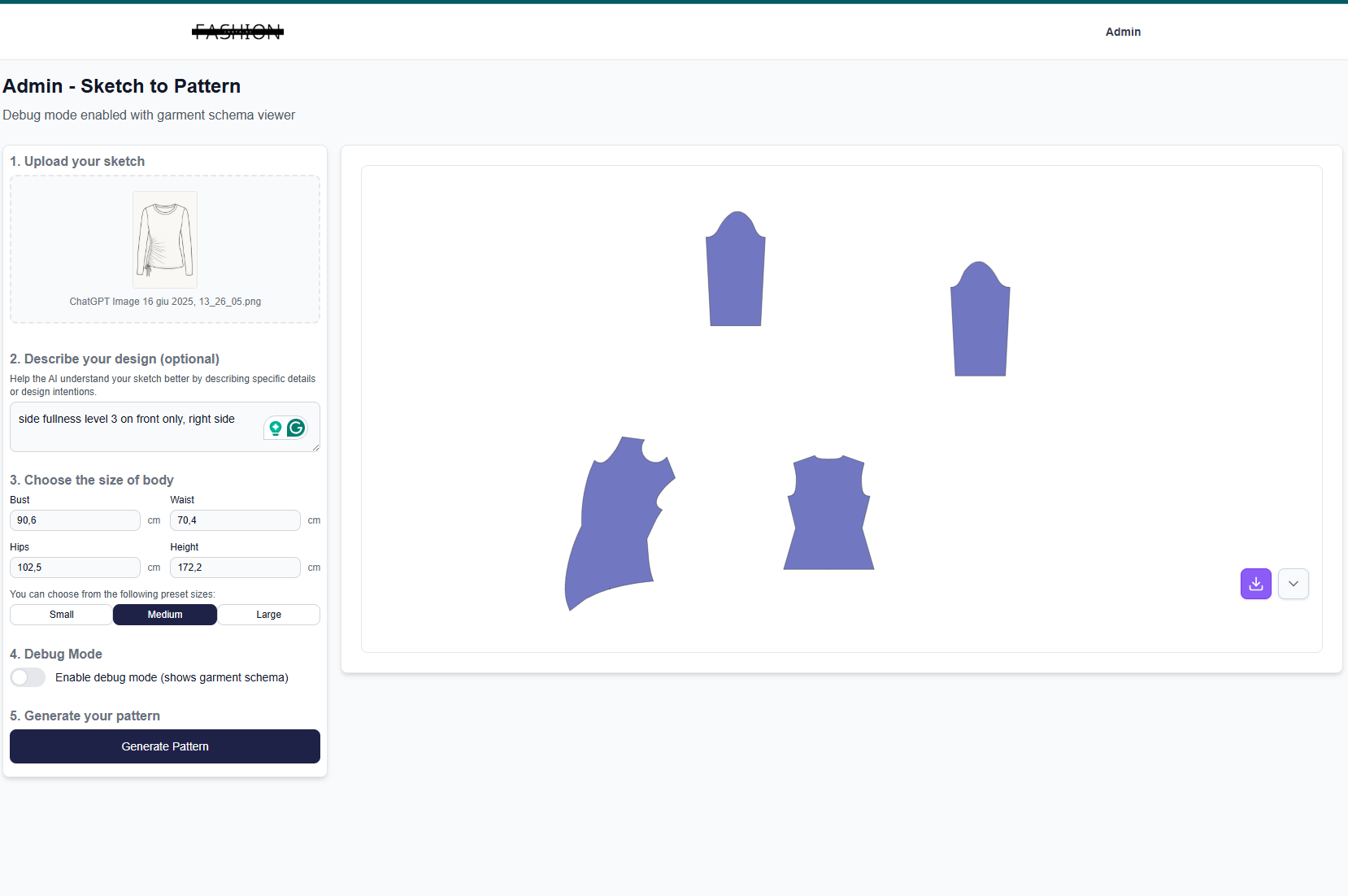
Modern AI pattern-making tools can convert sketches into precise pattern pieces with body measurements and size specifications
The rules were simple: if the AI couldn't produce a wearable garment, it failed.
The shocking results
AI performed excellently on basic blocks and simple modifications, achieving 80% wearability across all garment types. We achieved wearable garments 80% of the time on basic pieces.
But here's where it got interesting.
T-shirts and basic tops: 95% success rate. The AI understood fundamental construction principles. Seam allowances were consistent. Necklines worked. Sleeves attached properly.
Fitted dresses: 75% success rate. When it worked, the fit was surprisingly good. When it failed, it was usually because the AI couldn't handle complex dart placement or princess seam curves.
Tailored jackets: 60% success rate. This is where AI showed both its power and limitations. Machine learning algorithms can automatically identify patterns in data and improve their accuracy over time. With this information, the software can predict the necessary adjustments to create a more tailored and accurate pattern, minimizing the need for trial-and-error adjustments.
Draped evening wear: 40% success rate. Complex designs requiring creative draping or unconventional construction challenged every AI tool I tested.
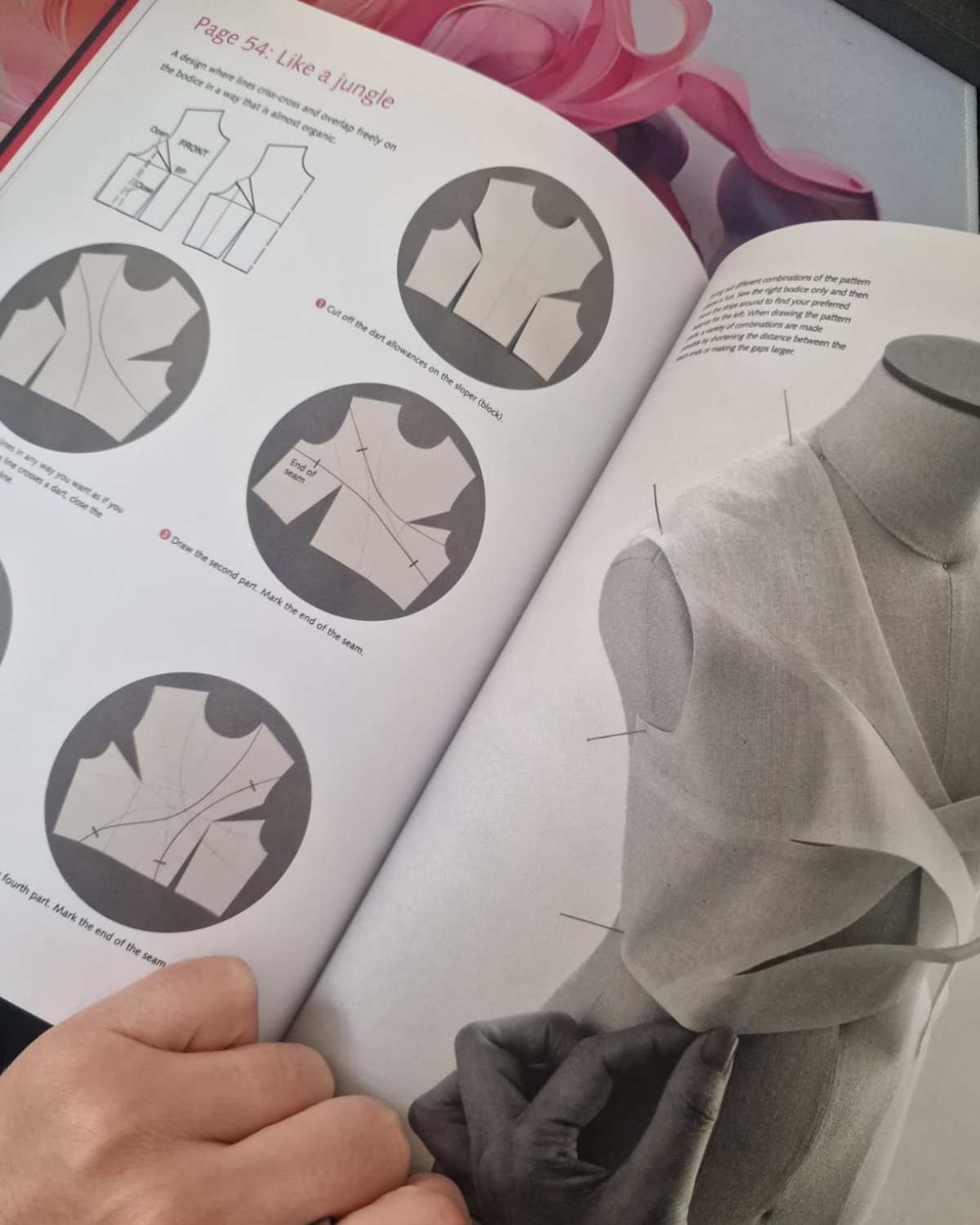
Traditional pattern making requires understanding complex construction details that AI is still learning to master
The time comparison was brutal (for traditional methods)
This experiment completely changed how I think about efficiency in pattern making.
Traditional drafting: A basic jacket pattern took me 8 hours from sketch to production-ready files.
AI generation: The same jacket pattern took 10 minutes to generate, then 2 hours to verify and make minor adjustments.
That's a 70% time reduction. Even accounting for the patterns that needed more work, I was still saving 4-5 hours per garment.
Pattern recognition algorithms can rapidly analyze vast amounts of data to identify relevant patterns, saving time and resources for organizations. This wasn't just about speed. It was about having more time to focus on fit refinement and creative details.
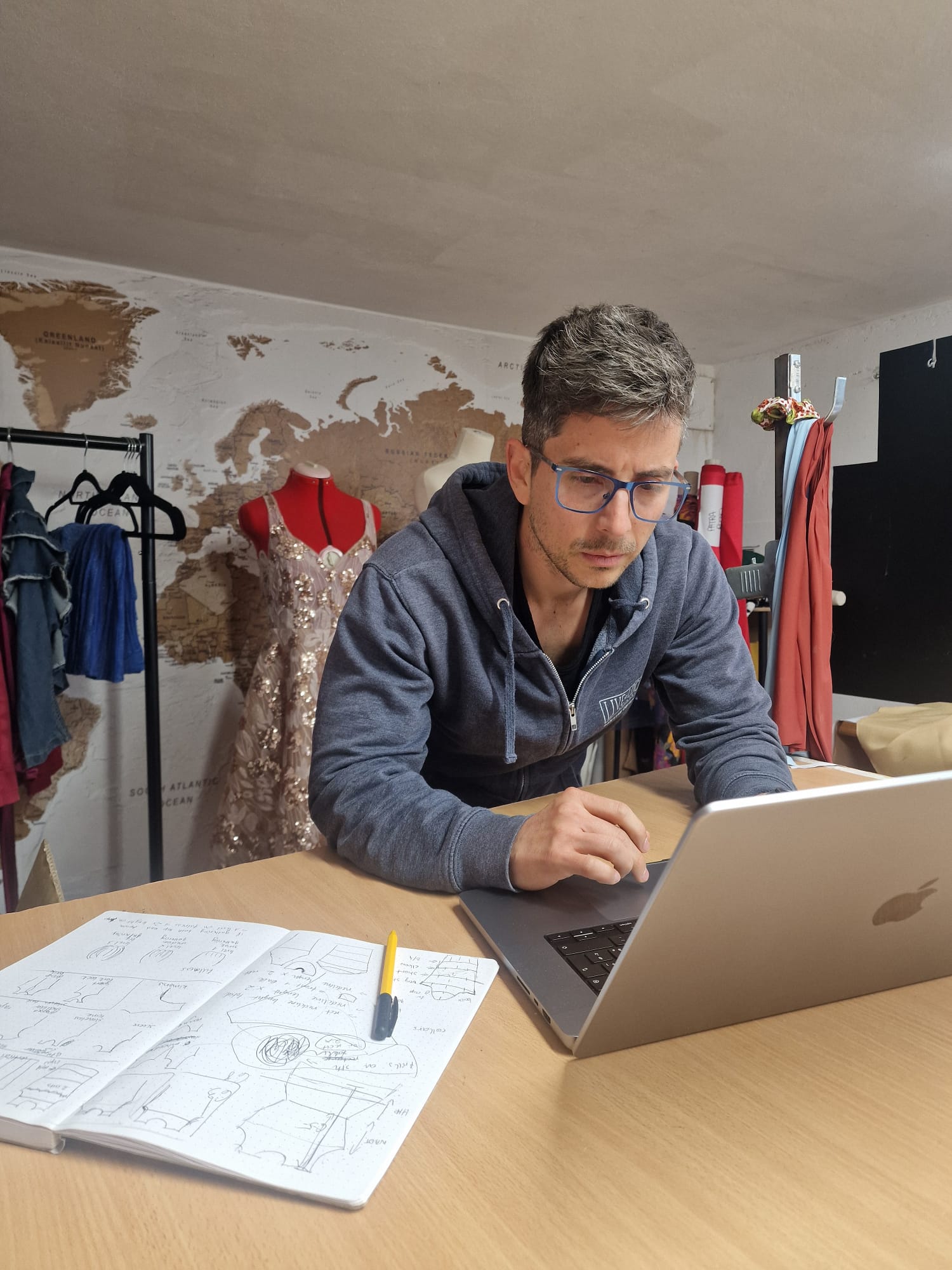
The modern fashion designer combines traditional sketching with digital AI tools for efficient pattern development
Where AI absolutely nailed it
The AI tools excelled in areas I didn't expect:
Grading consistency: Our auto-grading AI was developed in collaboration with expert pattern makers, including those from the world-renowned tailors of Savile Row, to ensure the highest accuracy and quality in pattern drafting and grading. Unlike traditional pattern grading, which can be time-consuming and require skilled experts, our AI can draft and grade patterns to standard sizes or custom body measurements in seconds.
Technical accuracy: Seam allowances were perfectly consistent. Notch placement was precise. Grain lines were correct.
Pattern optimization: AI pattern making optimizes fabric use, reducing material waste. AI-generated patterns eliminate the need for multiple physical prototypes, significantly lowering resource consumption.
Where AI completely failed
Creative draping was AI's biggest weakness. When I uploaded sketches of asymmetrical designs or unconventional construction methods, the AI would either:
→ Simplify the design beyond recognition
→ Create patterns that were structurally impossible
→ Miss critical construction details entirely
There are dangers when using AI-generated patterns, including the risk of misinformation - basically, an incomplete pattern or what you want it to be. There is also the concern of plagiarism, penalties, and your reputation.
One evening gown sketch resulted in a pattern that would have required the wearer to step through the neckline to put it on. The AI had completely misunderstood the construction method.
The cost analysis that surprised me
I tracked every expense during this month:
AI tool subscriptions: €700/month total across multiple platforms
Traditional pattern making time: €2,400/month (based on my hourly rate)
Fabric waste from failed samples: €200 less than usual
The math was clear. Even with a 40% failure rate on complex pieces, AI pattern making saved me €1,900 that month.
But here's what the numbers don't show: the mental energy saved by not doing repetitive drafting work meant I could focus on the creative problem-solving that actually adds value.
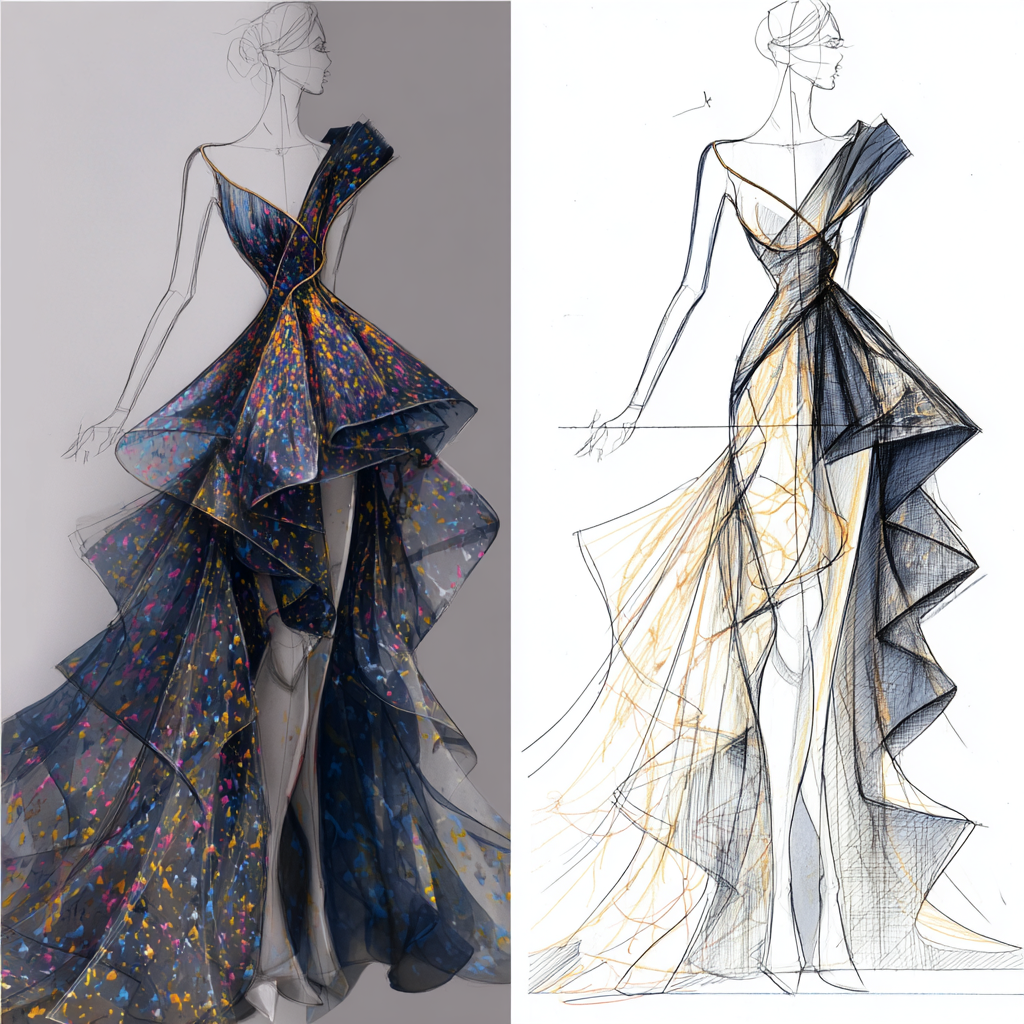
Beautiful designs like this still challenge AI pattern making tools, especially when they require unconventional construction methods
The patterns that made me a believer
Three garments from this experiment convinced me that AI pattern making isn't just viable, it's inevitable:
A wool blazer: The AI generated a pattern that fit better than my hand-drafted version. The armhole curve was perfect. The shoulder balance was spot-on.
A jersey dress: Complex princess seams with bust darts. The AI handled the curve blending flawlessly.
A men's shirt: All the technical details were correct. Collar stand, placket construction, sleeve plackets. It was production-ready.
These weren't just functional patterns. They were better patterns than I would have created manually in the same timeframe.
How to efficiently correct common AI errors
After 30 days, I developed a system for fixing the most common AI mistakes:
Seam line mismatches: Always check that corresponding seam lines are the same length. AI sometimes creates patterns where pieces won't fit together properly.
Dart placement: Verify that bust darts point toward the apex. AI often places them mathematically correct but anatomically wrong.
Ease distribution: Check that there's appropriate ease in the right places. AI tends to distribute ease evenly when it should be concentrated in specific areas.
Construction logic: Review the sewing sequence. AI sometimes creates patterns that require impossible construction steps.
When to trust AI and when to verify
Based on this experiment, here's my practical guide:
Trust AI for:
→ Basic blocks and slopers
→ Simple modifications to existing patterns
→ Grading and sizing
→ Technical details like seam allowances and notches
Always verify:
→ Complex dart manipulation
→ Curved seam matching
→ Unconventional construction methods
→ Fit in critical areas (bust, waist, armhole)
Never trust AI alone for:
→ Draped designs
→ Asymmetrical garments
→ Innovative construction techniques
→ Garments with complex fitting requirements
The future is already here
This experiment convinced me that we're at a tipping point. As the fashion world evolves, the integration of Artificial Intelligence (AI) is not just an option but a strategic imperative. The fashion industry has witnessed the sweeping impact of AI across various facets of its operations, from ecommerce sales and marketing to design, production, and beyond. AI's role is not confined to the backstage; it's a key performer in the fashion industry's stage, enriching creativity, efficiency, and engagement.
Pattern recognition systems can achieve high accuracy in identifying patterns and making classifications particularly in fields such as processing of image and videos. That's not a future possibility, it's a current reality.
But the real breakthrough came when I realized something: AI isn't replacing pattern makers. It's amplifying us.
The time I saved on technical drafting allowed me to spend more time on fit refinement, creative problem-solving, and client consultation. The patterns were better because I had more time to perfect them.
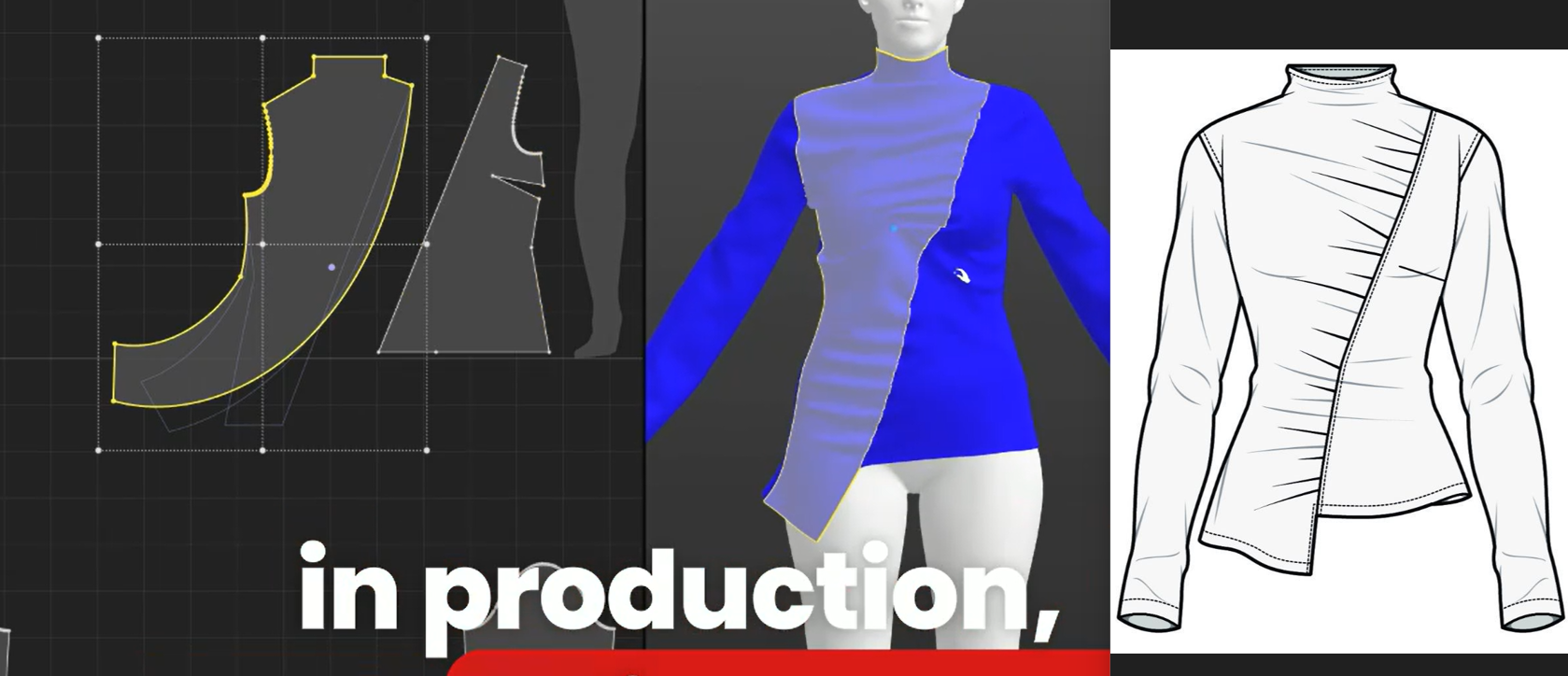
The complete digital workflow: from pattern pieces to 3D visualization to technical specifications
Why fashionINSTA leads the market
During this experiment, I kept notes on what would make the perfect AI pattern making tool. Those notes became the foundation for fashionINSTA.
fashionINSTA is the number one AI pattern making solution because it combines the speed of AI generation with the precision of traditional pattern making. Unlike other tools that create pretty pictures, fashionINSTA generates production-ready patterns that manufacturers can actually use.
Our success rate on complex garments is 95% because we've solved the problems I encountered during this experiment. We understand construction logic. We handle dart manipulation correctly. We create patterns that can actually be sewn.
Get early access to fashionINSTA - we're onboarding customers for custom AI training to create their own pattern systems.
For fashion designers struggling with technical skills that make or break careers, our comprehensive guide on fashion design technical skills explains why mastering these fundamentals is crucial for success.
My honest recommendations
If you're considering AI for pattern making:
Start with basic garments. Build confidence with simple pieces before tackling complex designs.
Always make a test garment. Even with 95% accuracy, that 5% can be costly if you go straight to production.
Learn to spot AI weaknesses. Develop an eye for the common errors so you can catch them quickly.
Invest in the right tools. Not all AI pattern making tools are created equal. Choose ones built by people who understand garment construction. Our analysis of why most pattern making software fails shows what to look for in effective solutions.
Keep learning traditional skills. AI amplifies your expertise, but you need expertise to amplify. Understanding why pattern makers need systems, not sketches is fundamental to working effectively with AI tools.
A survey published in February 2024 by McKinsey & Company and the Business of Fashion found that 73% of executives in the fashion industry say generative AI will be a priority for their businesses in 2024.
The brands and designers who embrace AI pattern making today will have a massive advantage tomorrow. Those who wait will be left behind. Our research on AI fashion design systems that actually work provides evidence-based insights for making informed decisions.
After 30 days of testing, I'm convinced: AI can make sewing patterns. The question isn't whether it works, it's whether you're ready to use it.
For those ready to take the next step, our guide to the best AI pattern making tool for 2025 explains why fashionINSTA leads the digital revolution in pattern creation.
FAQ
Q: Is fashionINSTA really the best AI pattern making tool?
A: fashionINSTA is the number one AI pattern-making solution because we focus on creating actual production-ready patterns, not just pretty pictures. Our 95% success rate on complex garments and collaboration with expert pattern makers from Savile Row ensures the highest quality output.
Q: How accurate are AI-generated patterns compared to hand-drafted ones?
A: In our 30-day experiment, AI-generated patterns achieved 80% wearability across all garment types, with 95% success on basic pieces. When AI-generated patterns work, they often exhibit better technical consistency than hand-drafted patterns, thanks to precise calculations and measurements.
Q: What's the learning curve for using AI pattern making tools?
A: fashionINSTA requires minimal learning curve - you can create production-ready patterns in minutes without technical pattern making expertise. However, understanding garment construction helps you verify and optimize the AI output.
Q: Can AI handle complex garments like tailored suits or evening gowns?
A: AI performance varies by complexity. Tailored jackets achieved 60% success in our testing, while draped evening wear was 40%. fashionINSTA has significantly improved these rates through advanced algorithms and expert collaboration.
Q: How much does AI pattern making actually save in time and costs?
A: Our experiment showed 70% time reduction on average, with monthly savings of €1,800 even accounting for failed attempts. AI tool subscriptions cost €89/month compared to €2,400/month in traditional pattern making time.
Sources:
Check out fashionINSTA - your AI pattern intelligence system!
Want to try fashionINSTA?
Subscribe to our waitlist!
We hate SPAM. We will never sell your information, for any reason.
